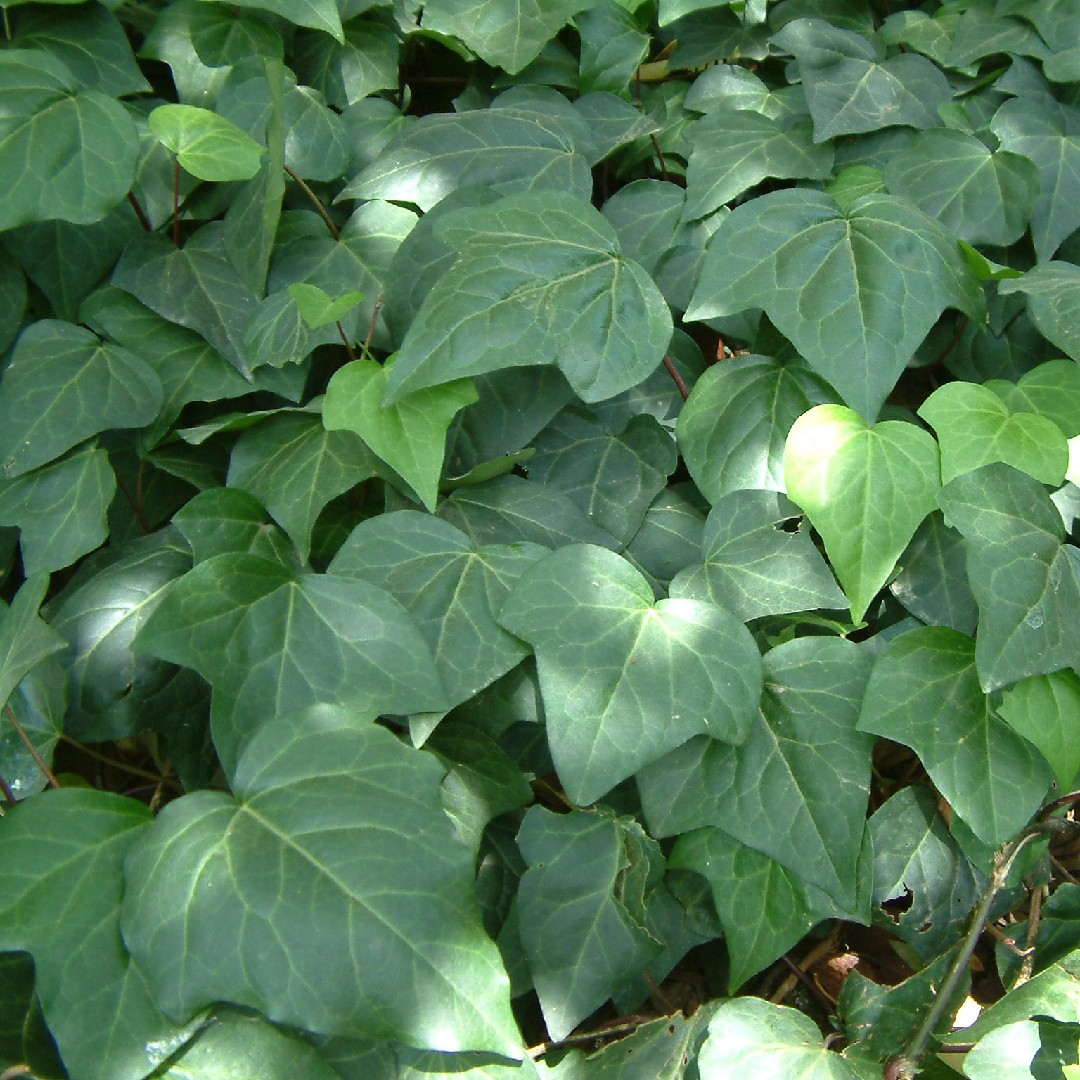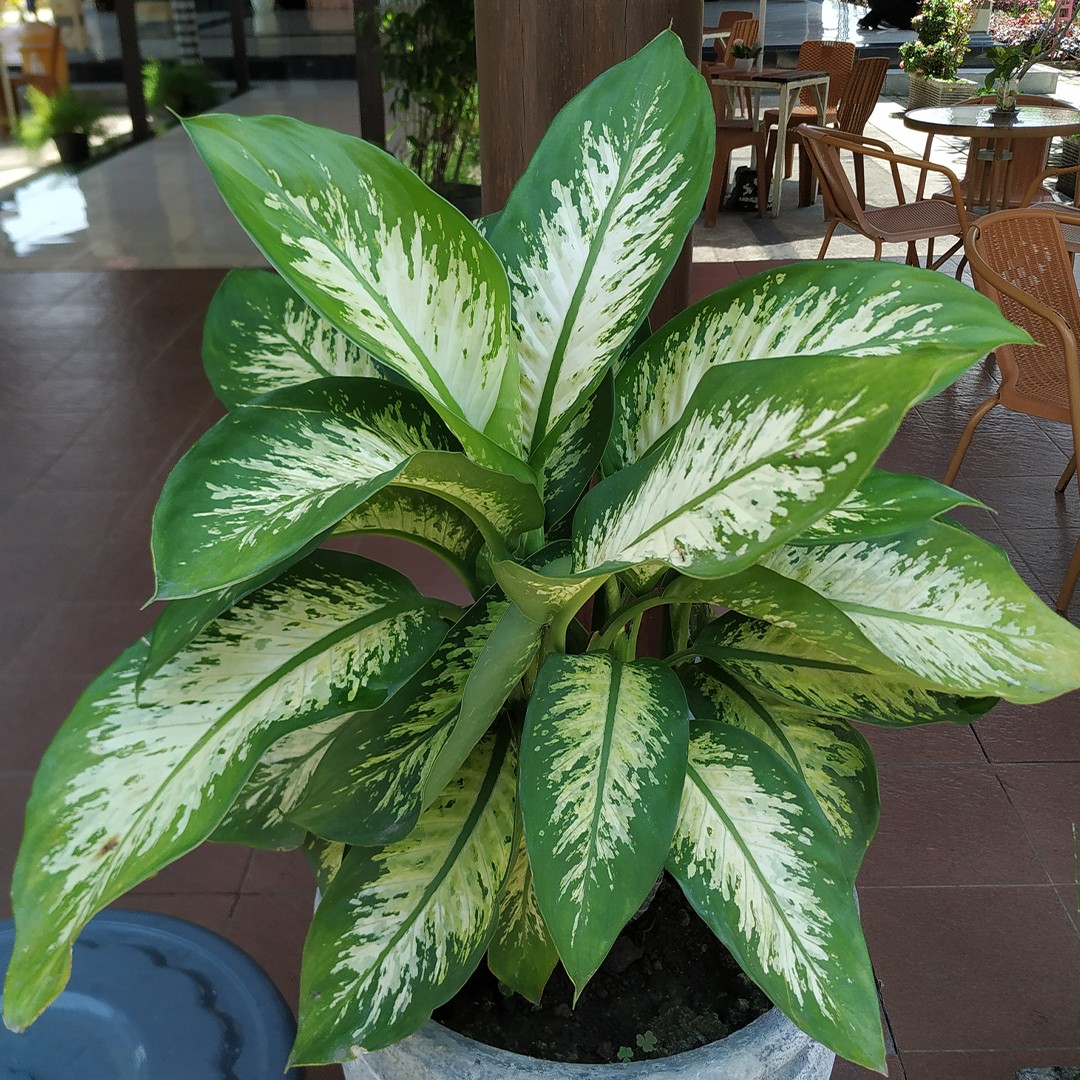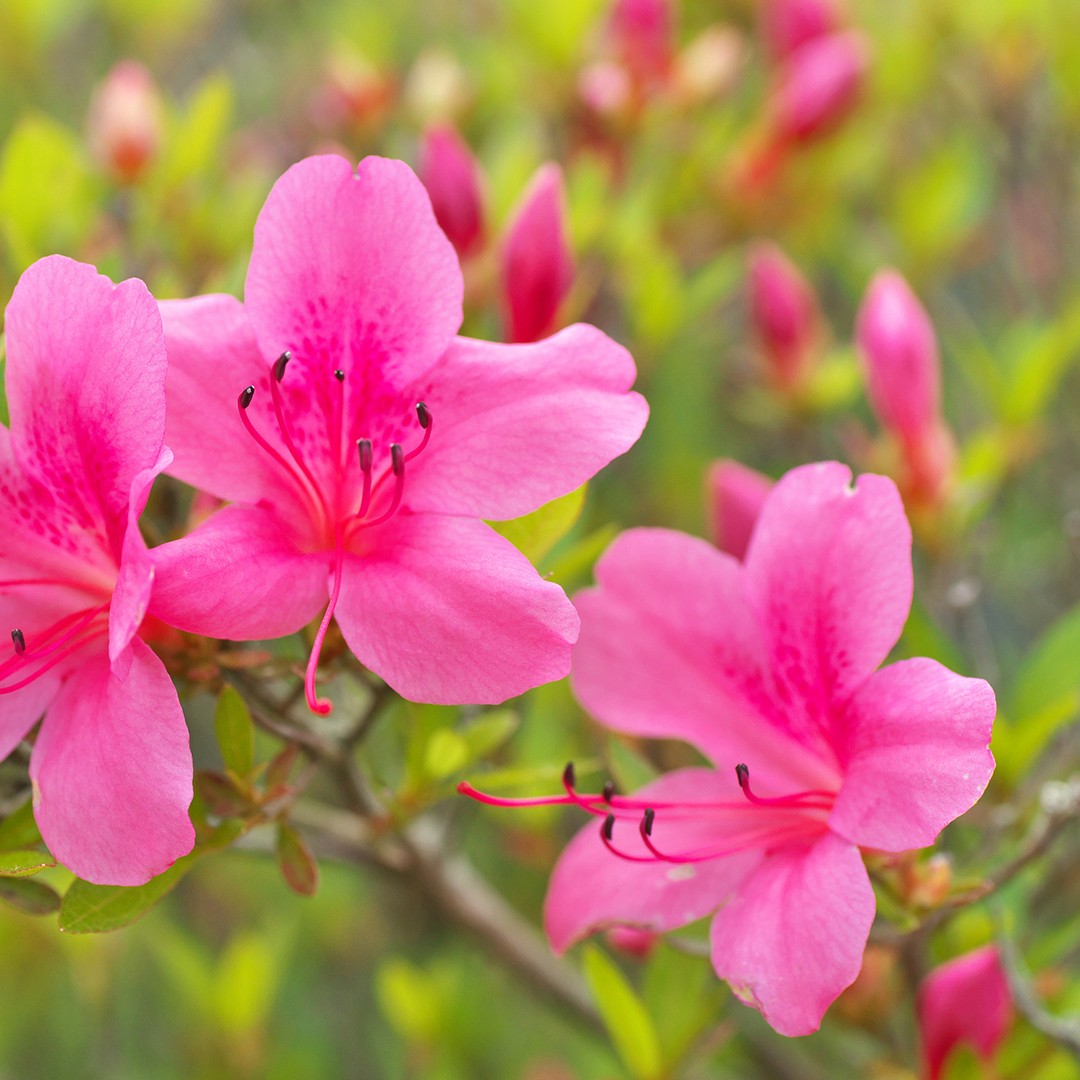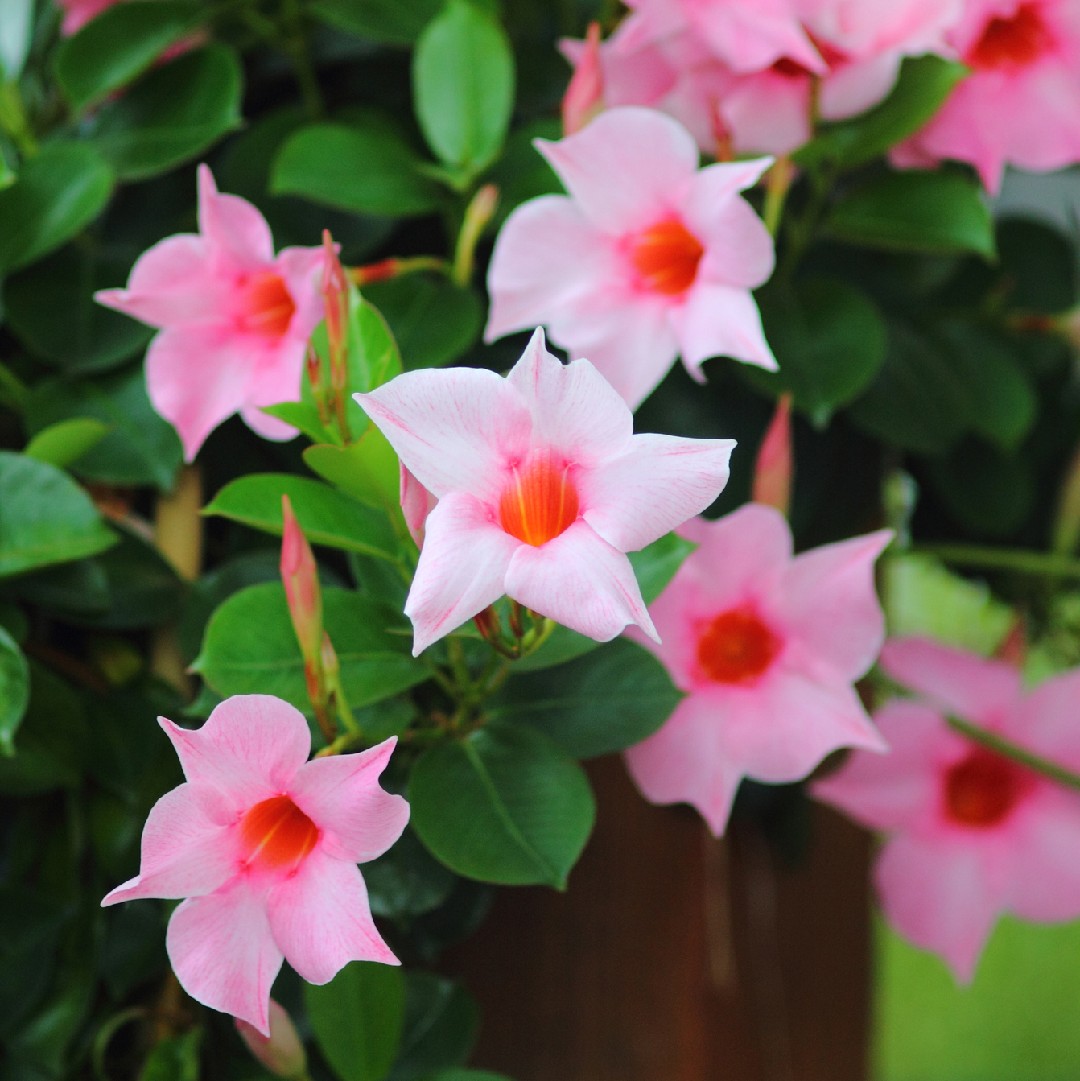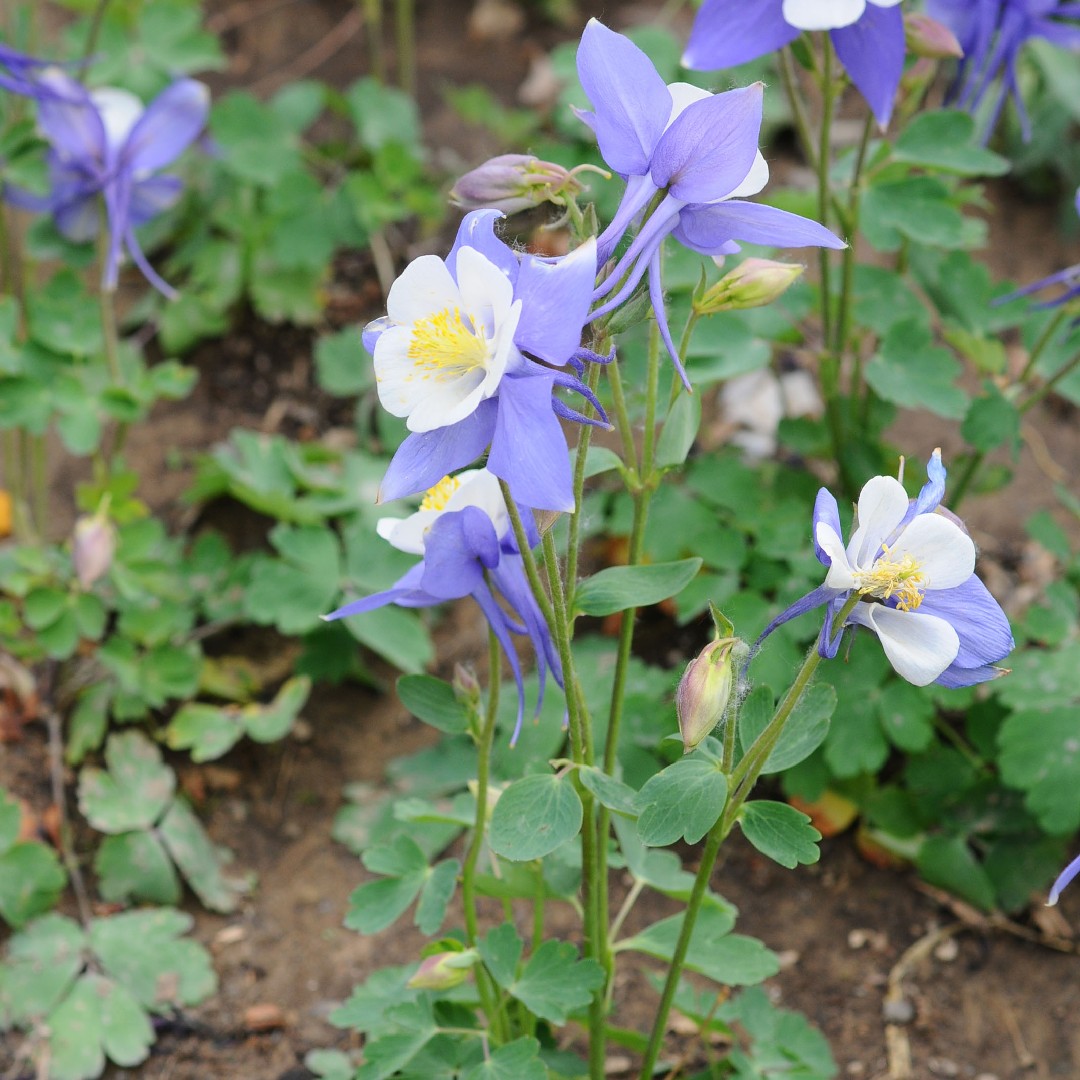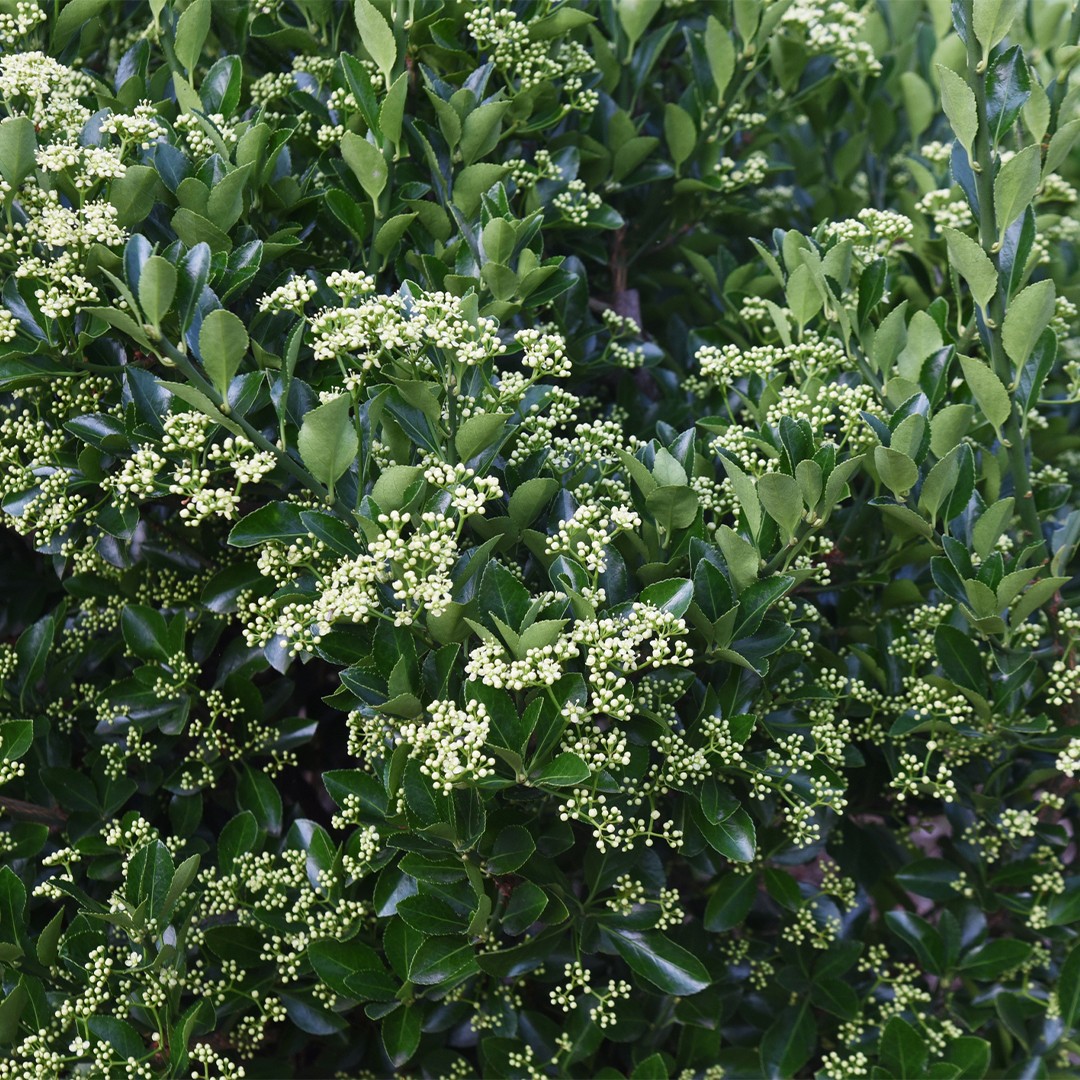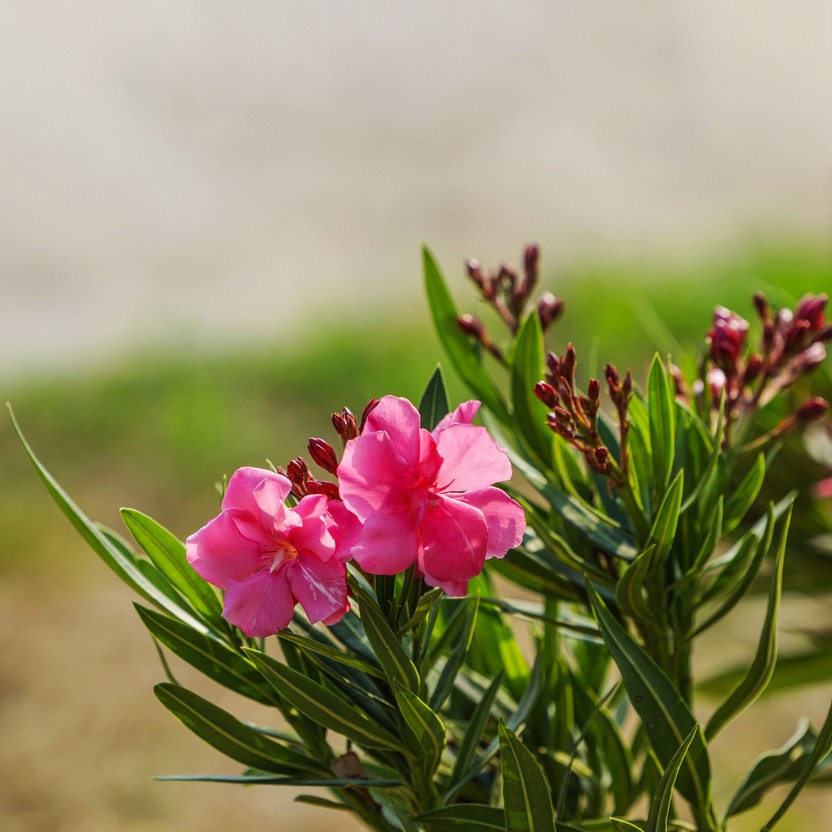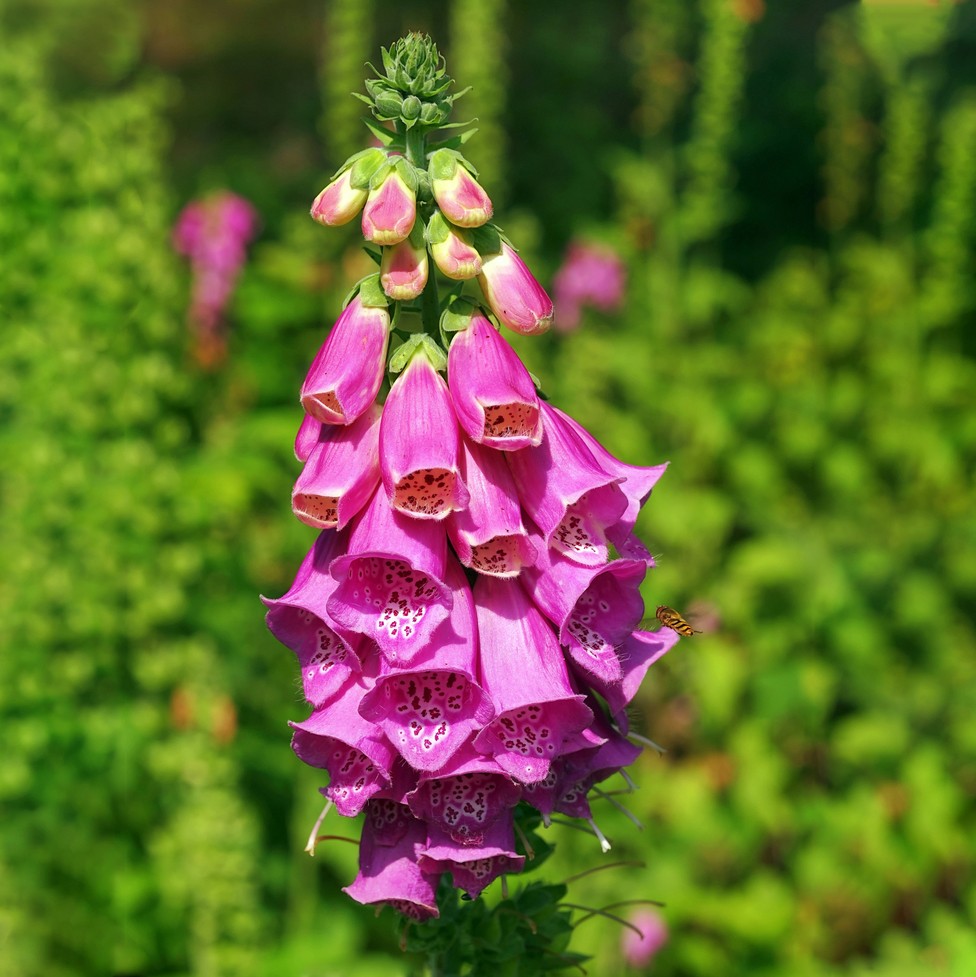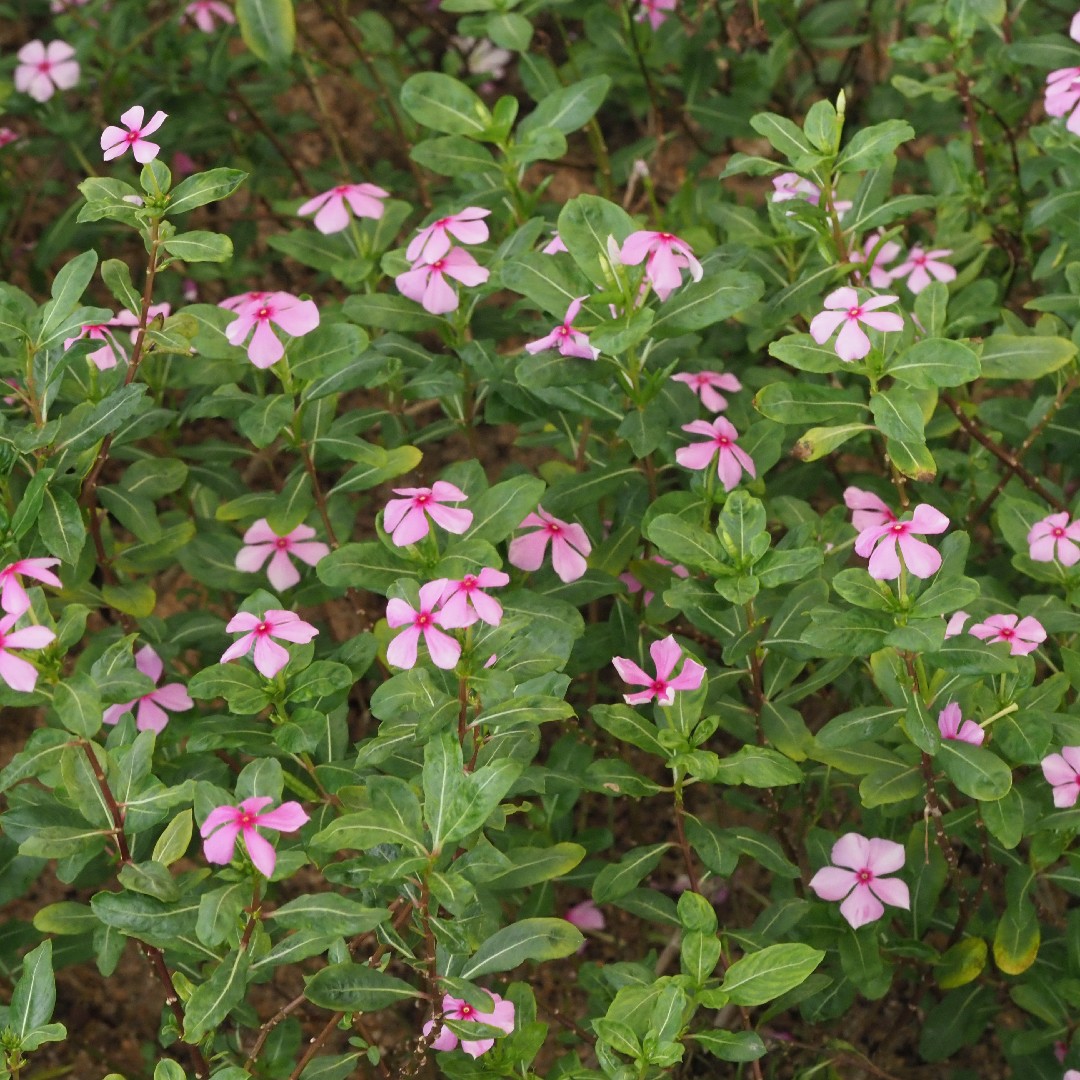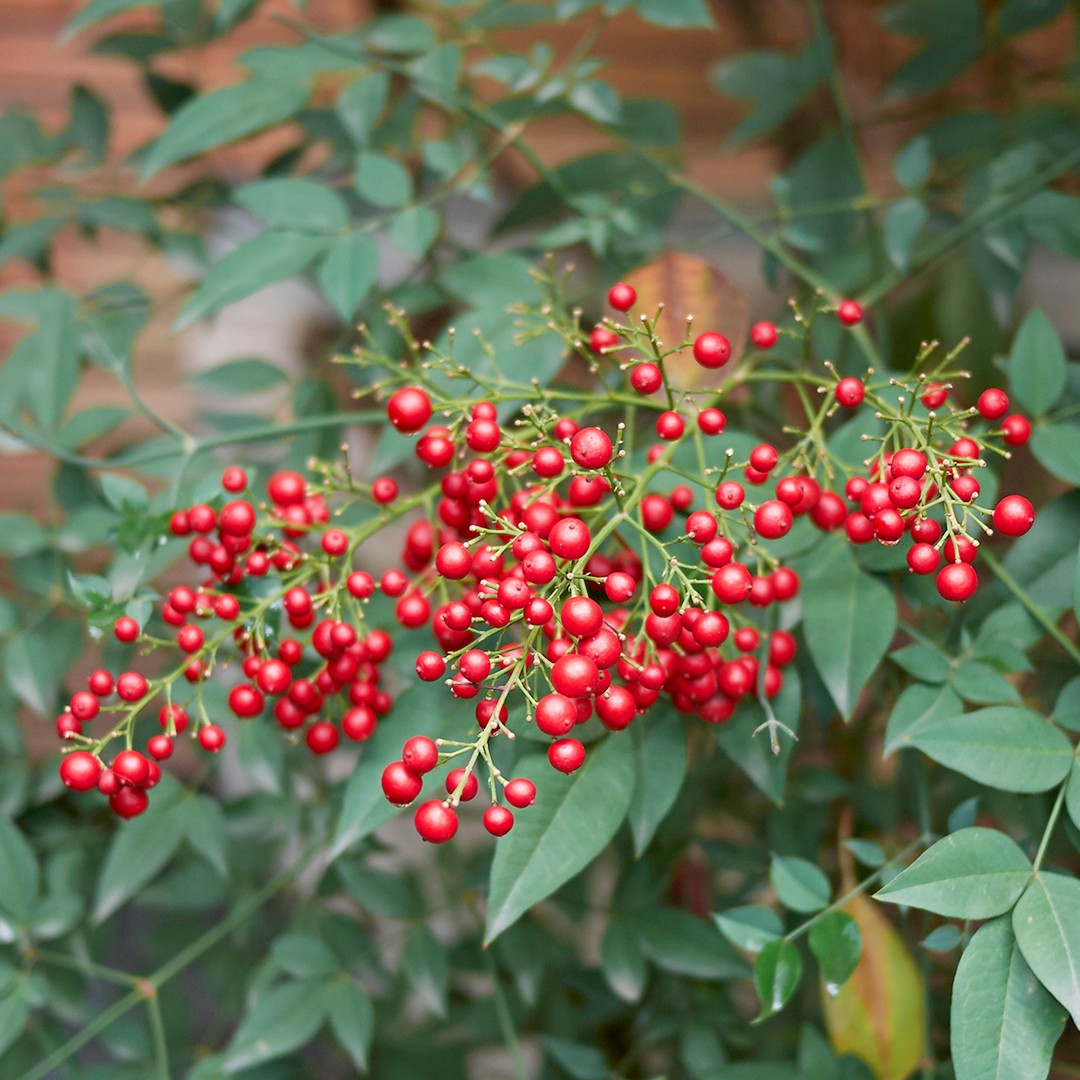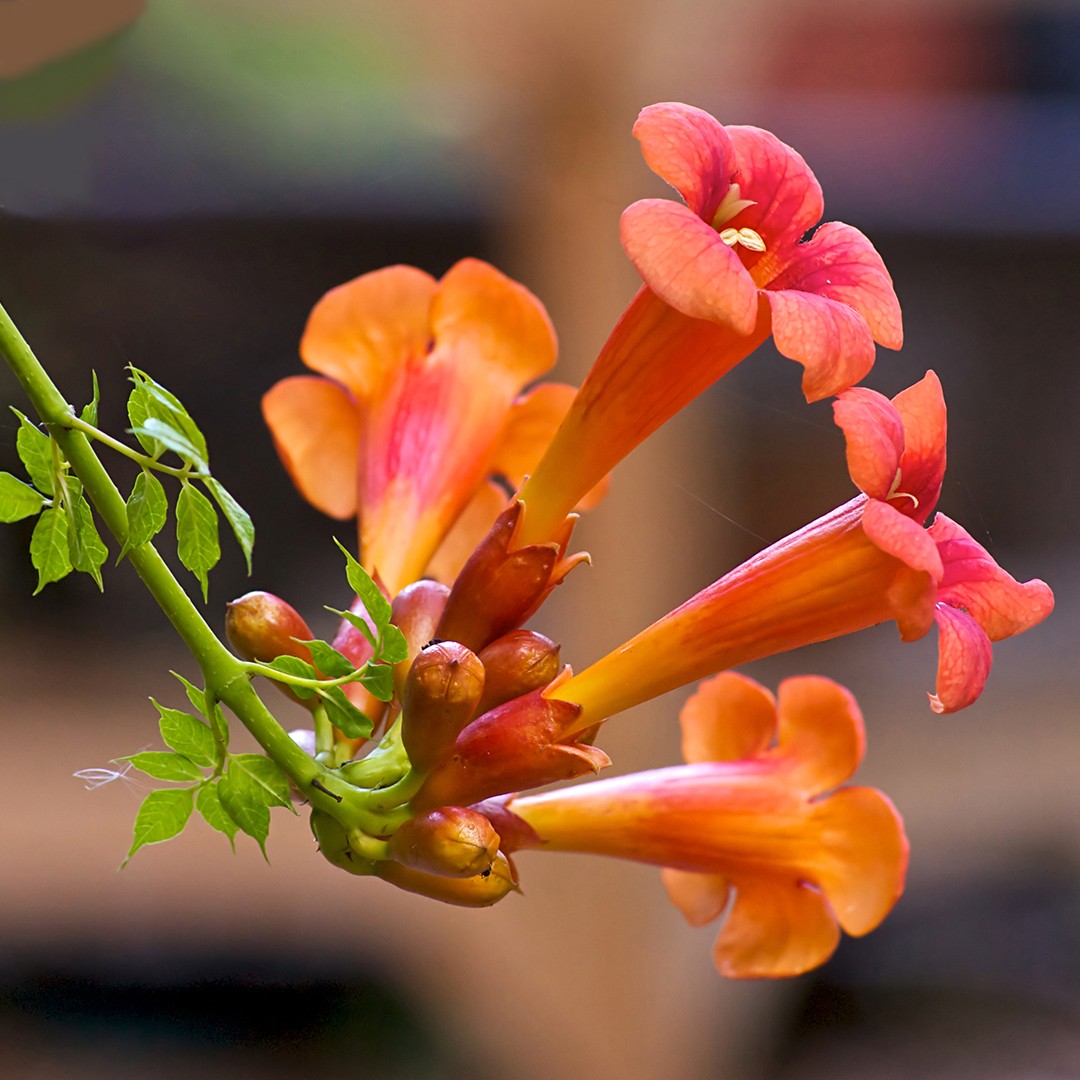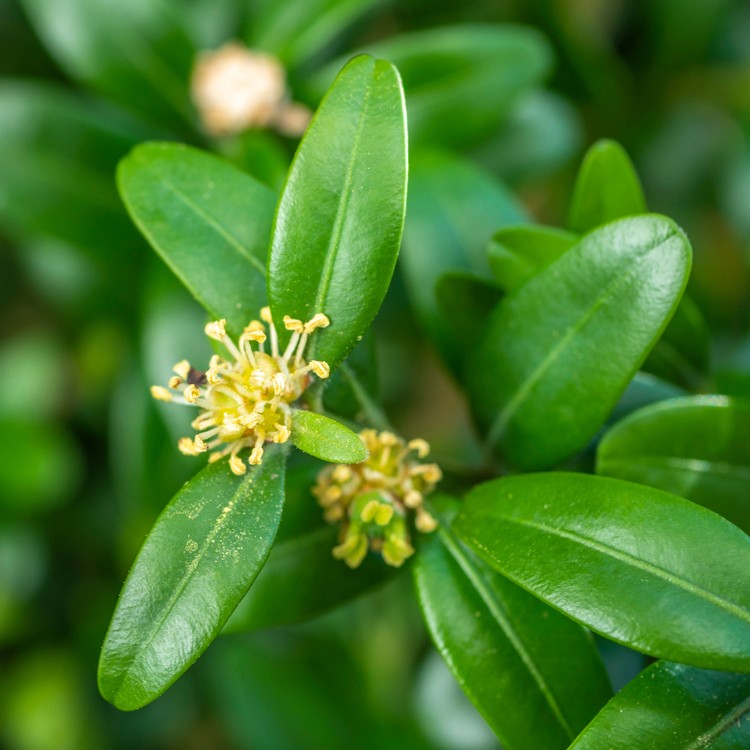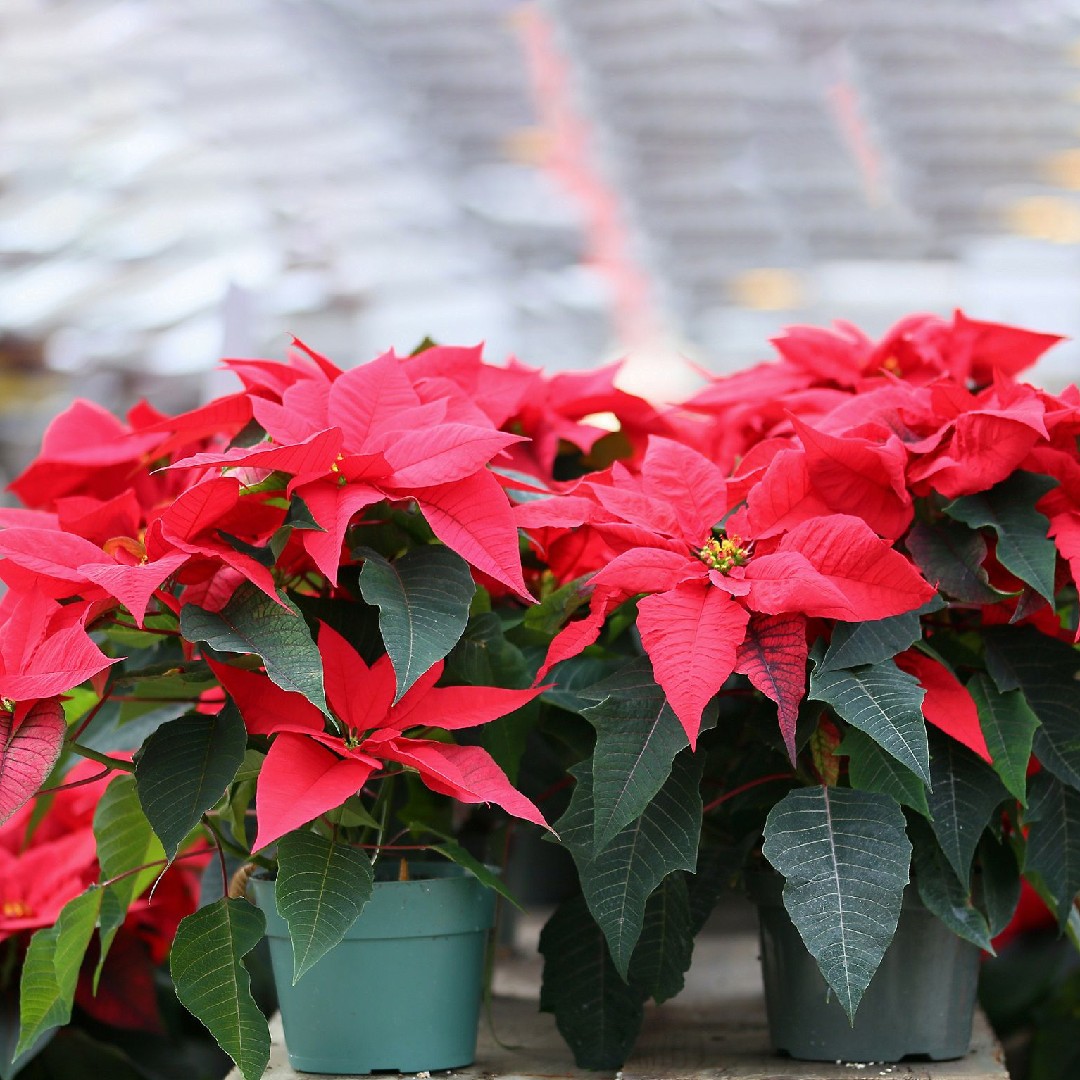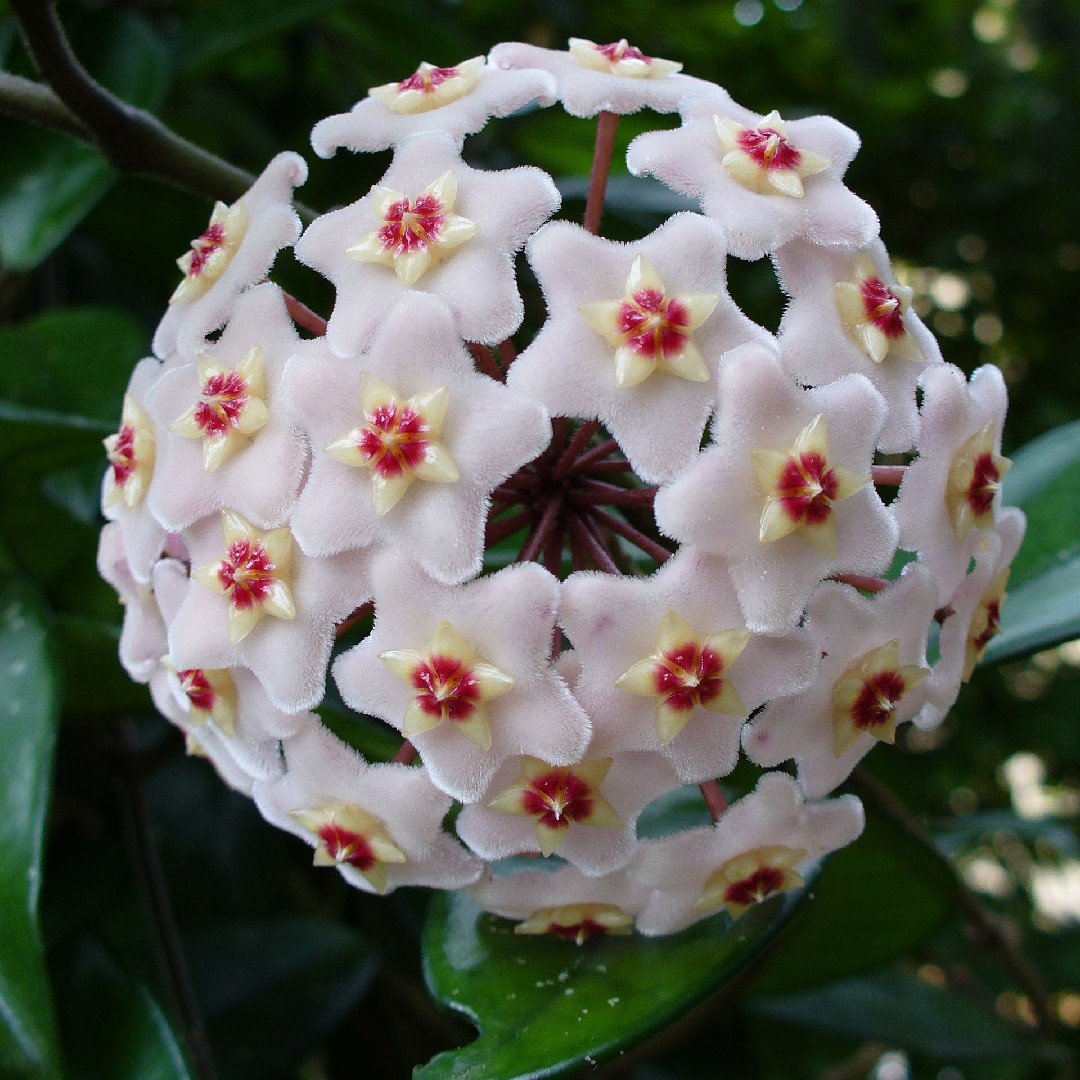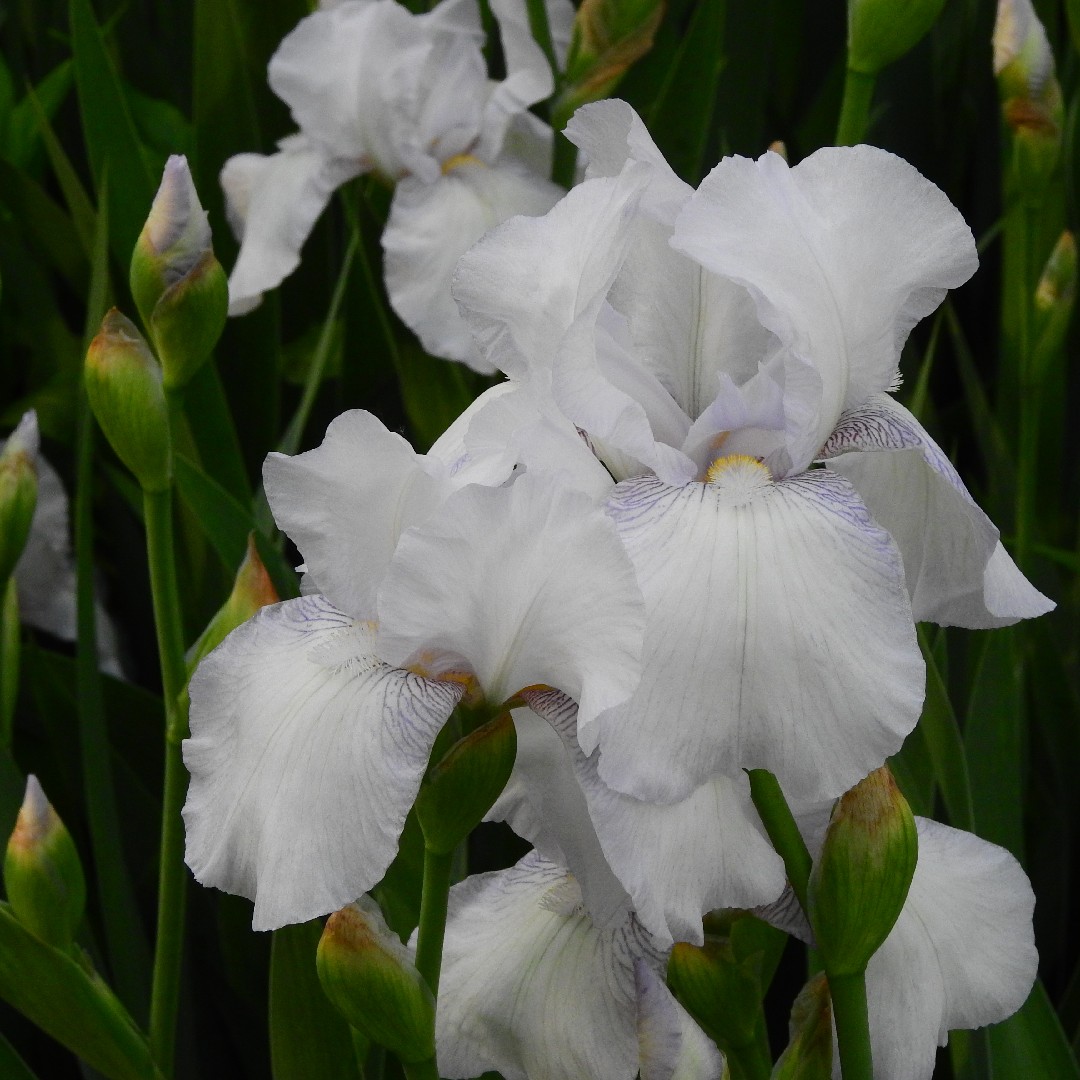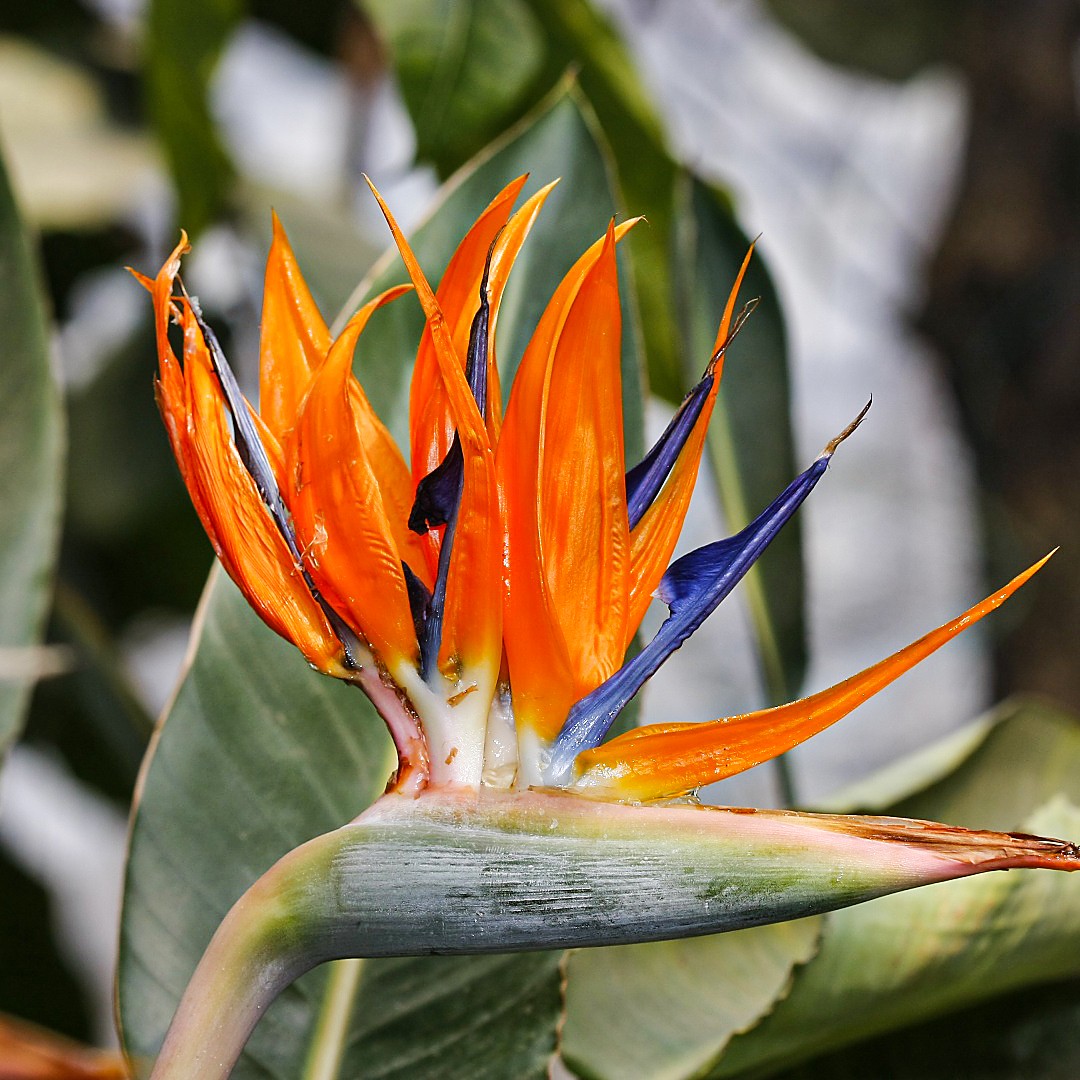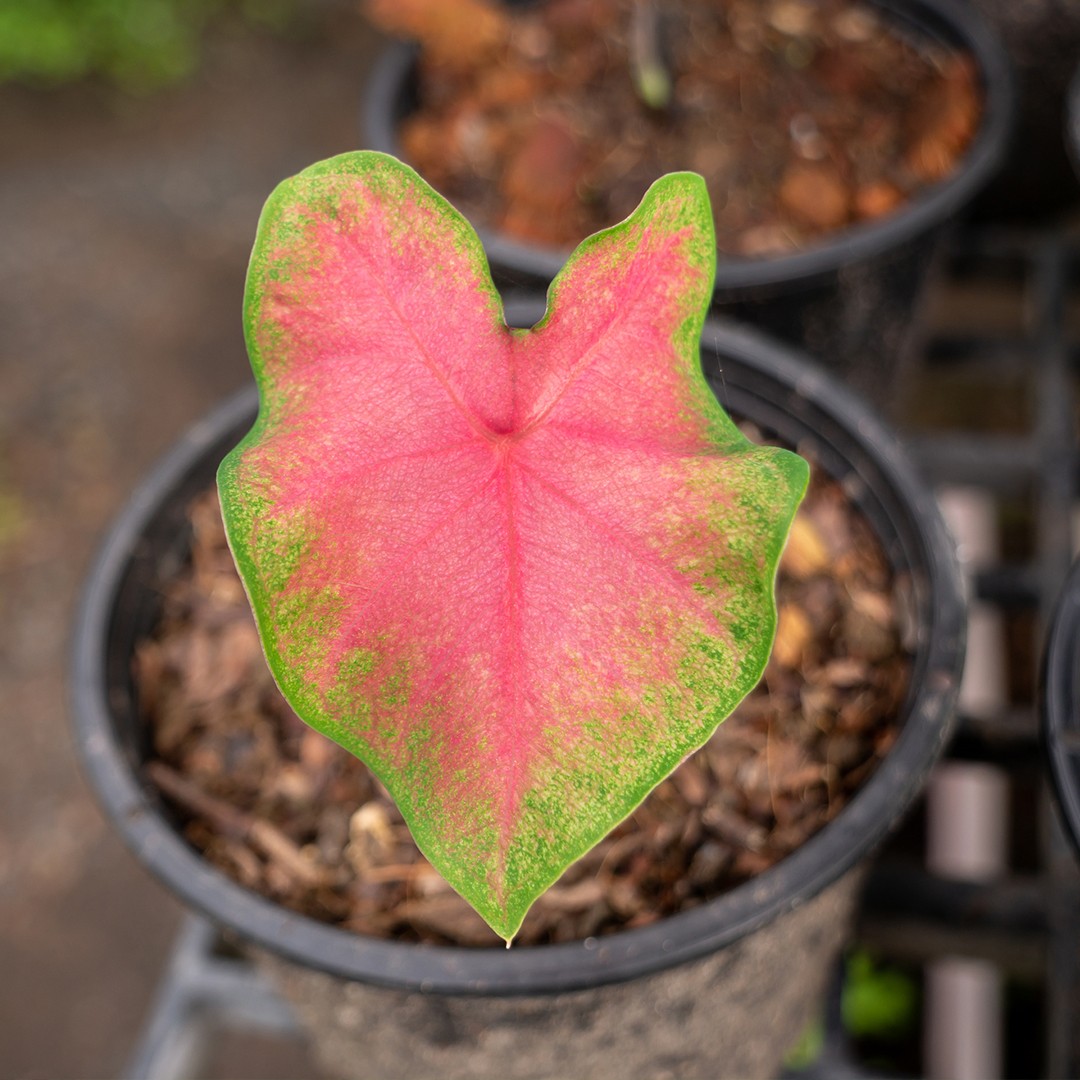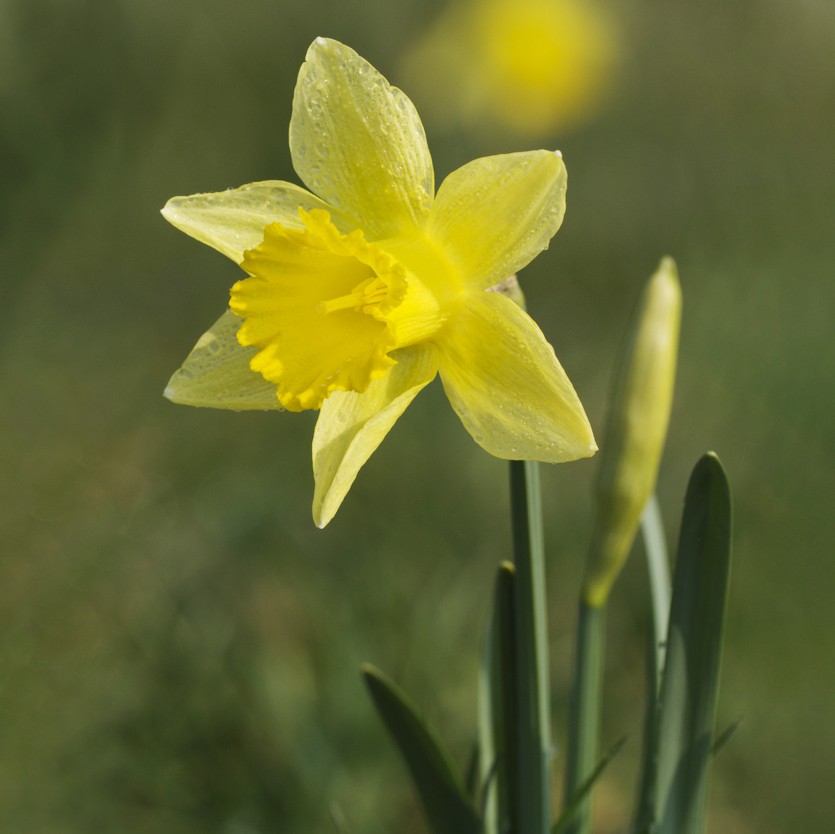What is the best way to water my Flamingo flower?
There are plenty of viable ways to supply your Flamingo flower with water. If you grow your plant in an indoor pot, for the Flamingo flowers in small pots, you can bring your potted plant to your kitchen sink. Then, use the faucet to add water to the container. By holding the pot in your hands, you should easily notice when the water begins to run through the pot’s drainage holes, at which point you can stop watering. The cold temperature will hurt the plants' root system, so please don't do this during winter or in cold climates. Most of the time, watering via your faucet is permissible for the Flamingo flower. However, if the local tap water contains a high proportion of fluorine, chlorine or salts, you should consider using rainwater or lake water. Also, since the Flamingo flower can respond well to overhead watering and watering directly into the soil, you can use a watering can, hose, or just about any tool you’d like to water it.
![more]()
What should I do if I water my Flamingo flower too much or too little?
If you discover that you have underwatered your Flamingo flower, your first step towards remedying the situation is to give your plant some water. Water deeply until excess water runs from the container’s drainage hole, or if you grow outside, water until the soil has become entirely moist. If you find your Flamingo flower is receiving too much water, begin by reducing your watering schedule. You also want to address the soil and container your Flamingo flower grows in. If either the soil or the container makes it difficult for water to drain efficiently, your plant will likely become overwatered again. Resolve the issue by moving your plant to looser soils and/or a container with bigger drainage holes or a more porous material. Also check the location of the plant. If the plant is in places like a corner, then it is recommended to move it to a window or around a door to enhance ventilation. Making sure the plants are in a well-ventilated location can reduce the occurrence of overwatering to some extent.
![more]()
How often should I water my Flamingo flower?
The Flamingo flower is not a species that requires consistent soil moisture. Instead, it is better to allow this plant’s soil to become dry between waterings. If you are like the many gardeners who grow Flamingo flowers in containers, you can judge whether or not it is time to add water by how dry the soil within the container is. For instance, if about top half of the soil in your container has become dry, it is time to add water. You can feel it by inserting your fingers or sticks into the soil or with soil moisture meter. For those who grow the Flamingo flower outdoors, you can plan to do your watering about once every other week, provided it has not rained recently.
![more]()
How much water does my Flamingo flower need?
After waiting for the first several layers of soil surrounding your Flamingo flower’s root to become dry(top half of the soil), it is time to add enough water to make them moist again. The amount of water it takes to achieve that goal depends on if you use a container, how large that container is, and how large your plant itself is. For a small Flamingo flower growing in a small to a medium-sized container, one to two cups may be enough to dampen the soil sufficiently. As you would expect, the volume of water you supply should increase for a larger plant. The best way to make sure your plant has received enough water is to stick your finger or a trowel into the soil and feel whether it is entirely moist. Alternatively, you can water until you see excess water draining from the holes at the bottom of your container.
![more]()
How can I tell if i'm watering my Flamingo flower enough?
Overwatering and underwatering are both bad for the health of your Flamingo flower. These two issues also manifest themselves in subtly different ways when they occur. Flamingo flower that receives too little water may begin to develop yellow leaves. Underwatering may also cause the leaf margins to become brown and brittle. By contrast, Flamingo flower that gets overwatered will often show yellow and brown marks on its leaves at the same time. Overwatering can also lead to diseases like root rot, some of which may also be visible on your plant. However, if you know the signs of overwatering and underwatering, you stand a good chance of correcting both issues.
![more]()
How should I water my Flamingo flower through the seasons?
During spring and fall, your watering schedule for the Flamingo flower will remain relatively the same, which will involve watering this plant about once every week. During summer, you may find that the hot weather causes your plant to need more water than usual, especially if it grows where there is a considerable amount of daily light exposure. In the winter, if it's hard to find some warm places for you plant, your Flamingo flower will enter a dormant growth phase, in which it will need far less water than usual. At this time, you may get by without watering your plant at all. If you do choose to water during winter, you should not do so more often than once every two to three weeks.
![more]()
How should I water my Flamingo flower at different growth stages?
After planting a new, young Flamingo flower or after transplanting an older Flamingo flower, you will probably need to give this plant more water than usual. Young plants often need consistent soil moisture during the early stages of their growth to help them adapt to their new growing locations. Transplants also need more water for a brief time to overcome transplant shock. In either case, you may need to water multiple times per week until your plant has exhibited continuous healthy growth. In most situations, your water should be moderate and should never be significant enough to cause overwatering.
![more]()
What's the difference between watering Flamingo flower indoors and outdoors?
There are a few reasons why you may need to water an indoor Flamingo flower more often than one that grows in the ground outdoors. First, indoor growing settings tend to be drier than outdoor ones, often due to the effect of air conditioning units. While thw size of the pot and the soil determines the warer accumulating ability. Additionally, when your plant grows indoors, it will rely on you entirely for its water By contrast, Flamingo flower that grows outside can receive water from rain. If you are in an area with high rainfall, you may not have to give it extra watering. When there is not enough rain, you should water additionally to ensure that the soil does not dry out completely.
![more]()
Does my Flamingo flower need to be pruned?
The usual goal for the Flamingo flower is to have it grow as big and full as possible. While the plant doesn’t require consistent trimming, it can benefit by removing old flowers and any damaged, dead, or diseased leaves. You can also trim back the leaves if it is starting to get too big for the pot and space you are keeping it.
![more]()
When is the best time to prune my Flamingo flower?
Flamingo flower don’t have a winter dormancy cycle at the suitable temperature. With that said, their growth does slow down as the days get shorter, however the leaves don’t die. What does that mean for pruning? It means there’s no specific season where it’s better to prune. Ideally, you will want to wait until the flower blooms before pruning it, which can take about a month after the appearance of the blossom. With deadheading, you’ll want to do this around late spring or when only a few of the blossoms have faded. You should always prune brown or yellow leaves when you notice them. Throughout the growing phase, make sure to pay close attention to any potential diseased leaves and remove these as necessary.
![more]()
What should I do after pruning my Flamingo flower?
Once you’ve pruned your plant, you should dispose of the stems and leaves either by composting the healthy ones or throwing out the diseased parts. You can also fertilize just before or after pruning, which gives Flamingo flower a little vitamin boost that can provide it the nutrients needed to better protect itself from any nearby pathogens or diseases. You don’t need much after care when you’re done pruning. It might benefit from light watering and some liquid plant food to encourage new blooms and growth.
![more]()
How can I prune my Flamingo flower during different growth stages?
Chances are you’re not getting the Flamingo flower from seed, which means you’re already getting a mature plant. Since the plant doesn’t have a true dormancy cycle, there are really only two phases: blooming and non-blooming. While the plant is blooming, you should only remove yellow or dead leaves and cut off any brown tips on the leaves. Avoid doing too much pruning during this time as it can stress the plant. Still, you should remove any diseased or dead leaves to keep your plant presentable. The best time to prune is after the blossoms have already wilted. You can remove both the spent blossoms and any old and yellowed leaves at the same time. If you’re noticing a large amount of yellow leaves, you might be overwatering your plant or not giving it enough nutrients. While yellow or brown leaves don’t always mean there’s an issue, if you notice a large amount of leaves shifting colors, it usually means there’s a problem with the plant.
![more]()
How can I prune my Flamingo flower during different seasons?
As an evergreen plant, Flamingo flower doesn’t have the same cycles as those found in colder areas. The leaves will remain green throughout the year, which is one of the many reasons it is a popular houseplant. If you want to deadhead, you should do so after the blossoms have already wilted. Throughout the growing phase, make sure to pay close attention to any potential diseased leaves and remove these as necessary.
![more]()
Are there any instructions for pruning my Flamingo flower?
How you prune the Flamingo flower will depend on whether you’re performing general care or deadheading. For general care, simply cut off the blossoms that have already died. Make sure to get as close to the base as possible and snip at a 45-degree angle. Repeat this for all stalks with wilting blooms. After that, trim back any outer leaves that are old and yellowing. If you simply want to thin the plant out, start with the outermost leaf and work your way in. Avoid removing more than 30 percent of the leaves at once. Throughout the growing phase, make sure to pay close attention to any potential diseased leaves and remove these as necessary.
![more]()
How many hours of sunlight does Flamingo flower need to grow?
Unlike plants that require full, indirect sunlight, tropical herbs that prefer full shade need very little direct sunlight to grow. These plants typically require only a few hours of indirect light each day to thrive. While you should still place your full shade tropical herb near a window, it's important to ensure that the plant is never exposed to too much sunlight. If you're growing your full shade tropical herb indoors, you can provide it with the necessary light by placing it near a north-facing window or by using a grow light. A fluorescent or LED grow light can help mimic the soft, dappled light that your plant would receive in its natural environment.
![more]()
What will happen if Flamingo flower doesn’t get enough sunlight?
If your full shade tropical herb isn't getting enough sunlight, it may become leggy and weak. The leaves may also start to yellow and drop off, and the plant may stop growing. If you notice any of these signs, try moving your plant to a brighter location or providing it with additional light. Be careful not to expose the plant to direct afternoon sunlight, as this can cause sunburn.
![more]()
What will happen if Flamingo flower gets too much sunlight?
Tropical herbs that prefer full shade can be extremely sensitive to direct sunlight. If your plant is exposed to too much light, the leaves may start to turn yellow or brown and may eventually drop off. Additionally, the plant may become stunted and stop growing. If you notice any signs of sunburn or overexposure to light, move your plant to a shadier location or provide it with additional shade. In conclusion, understanding the sunlight requirements of your tropical herbs is crucial to keeping them healthy and happy. Full shade tropical herbs require only a few hours of indirect light each day to thrive, and ensure that the plant is never exposed to too much sunlight. By providing your plant with the right amount of light and shade, you can help ensure that it grows strong and healthy.
![more]()
What is the optimal temperature for Flamingo flower?
For this tropical plant to thrive, you’ll want to keep them between 75℉ and 90℉ (25-32℃). Each species can handle temperatures outside of this range, but keeping it within several degrees of these limits will ensure they grow to their maximum potential. As for its extreme temperature limits, any environment below 50℉ (10℃) or above 95℉ (35℃) will begin to hinder its growth and cause various aberrations to its leaves and stems. This is especially true with low temperatures; even a light frost can cause your tropical plants to perish. Cellular death can begin to happen at a rapid pace, with some species dying in as little as 12 to 24 hours.
![more]()
Does Flamingo flower require different temperatures for different growing phases?
While Flamingo flower doesn’t require any changes in temperature to enter different growing phases, it is important to stay consistent. Wild temperature fluctuations can slow down its growth regardless of its current phase, so it's always better to keep them in a controlled environment. That optimal temperature range of 75℉ and 90℉ (25-32℃) is vital to maintain, especially staying above the lower limit. Going above 90℉(32℃) isn’t ideal, but as tropical plant it won’t suffer too much. On the other hand, going below 50℉ (10℃) (and especially 40℉/5℃) will begin to directly damage this heat-loving plant species.
![more]()
Does Flamingo flower need different temperatures for different seasons?
Flamingo flower does not need different temperatures for different growing seasons. The most important step in seasonal care is to keep the environment within the optimal temperature range. That's why it's always best to keep this plant indoors. That way, you can control the temperature no matter what the climate is like outside. Light is also important for tropical species, with all of these plants preferring a partial side level of sun exposure. This means any light they receive needs to be dappled or filtered, with bright but indirect light being the best option when growing your plants indoors. Too much direct sunlight can negatively affect your plant’s leaves, reducing its growth potential.
![more]()
What are the temperature guidelines to keep your Flamingo flower healthy?
Tip #1: Don’t Leave Your Plant Near Windows in Colder Months If you want to make sure your plant isn’t exposed to colder temperatures, you may want to keep them away from windows. In colder months like late fall and winter, even the smallest draft can leak cold air into your home through cracks in your windows. While this air usually dissipates and warms up as it travels throughout your home, any plants placed in close proximity to the window will be affected. Move your tropical plants into an area where they will still get bright but indirect light, while making sure they won’t be affected by potential drafts. Tip #2: If You Find Dry Patches, Your Plant May Be Getting Too Much Sunlight or Heat You may notice the leaves become white or even scorched on a sunny day. These discolorations and unusual markings usually indicate that a plant is getting too much heat or sunlight, and it may be dehydrated. Excess light and heat will dry out the soil, stopping plants from getting the moisture they need to support their cellular structure. It also slows down or stops the process of photosynthesis, further hindering growth. If ignored for too long, these dry spots can spread and eventually result in the death of your plants. Tip #3: Avoid Frost at All Costs Colder temperatures and frost can damage your plants by causing ice crystals or disrupt normal physiological activity. This makes it nearly impossible for water to move freely throughout plant tissue, creating a deficit of moisture in their stems and leaves. You can tell a plant has been damaged by frost if it begins to suffer from hydrosis (it will appear as though it's soaked with water.) If the problem persists, your plants may begin shriveling and turning a dark brown or black hue. After that, the plant will almost certainly die.
![more]()
What is the best way to maintain the right temperature for my Flamingo flower?
The best way to maintain the right temperature range for Flamingo flower is by keeping an eye on both the climate and humidity. You’ll want to try to keep each species in a room where you have access to climate control, keeping the heat in the temperature range best mimics its natural habitat. The humidity levels will also have a direct effect on temperature, so it's important to monitor these as well. You can artificially raise the humidity of your growing space by using a humidifier or lightly misting the leaves with water. If you intend to grow this species outside, you may find it difficult to maintain the right balance of temperature and humidity. If temperatures begin to drop or the air becomes too dry, your best option is to find room within your home and move your plant inside. An indoor growing space will allow you to control the climate more closely, helping your plant reach its full potential.
![more]()
Why do I need to fertilize my Flamingo flower?
Fertilizer, and soil nutrients in general, are an essential form of fuel that your Flamingo flower will use to maintain healthy growth. In general, plants use the nutrients they find in the soil to develop new plant material and keep their existing components in good condition. For the Flamingo flower specifically, fertilization is necessary to help this plant display the best version of its flowers. Since the flowers are the main form of attraction to this plant, most gardeners will want to do all they can to ensure the flowers appear in their best form. Fertilization is one of the most reliable ways to help your Flamingo flower produce the best possible blooms.
![more]()
When is the best time to fertilize my Flamingo flower?
The Flamingo flower goes through two main phases throughout each year. The first phase is the dormant phase, in which this plant will put forth minimal new growth. This dormant phase takes place during the winter. The other phase is the active growth phase, which takes place during spring and fall, which is when your Flamingo flower will need fertilization the most. Generally, it is best to fertilize your Flamingo flower starting in the spring months. You should repeat the feeding about once per month throughout the rest of the spring and through most of the summer. As fall approaches, you can begin to reduce your fertilization rate.
![more]()
When should I avoid fertilizing my Flamingo flower?
You want to support Flamingo flower growth, but you also don’t want to cause root burn. Your plant is actively growing in the spring and summer, it’s when the extra nutrients are necessary. In the fall and winter, your plant will enter its dormancy stage. It’s when you want to stop fertilizing.
![more]()
What type of fertilizer does my Flamingo flower need?
The ideal fertilizer for a Flamingo flower is one that has a relatively balanced mix of the three main plant nutrients, with slightly higher amounts of phosphorus. Alternatively, some gardeners choose to improve their Flamingo flower 's soil by adding organic materials such as compost, worm castings, and manure. Fertilizers can come in many forms, and most of these forms will work well for your Flamingo flower. However, some of the best fertilizers for Flamingo flower come in either a liquid or a powdered form. Regardless of which you use, you should ensure that you dilute your fertilizer and apply it while watering your Flamingo flower.
![more]()
How do I fertilize my Flamingo flower?
Once you have found a suitable fertilizer and learned the ideal fertilization schedule for your Flamingo flower, you are ready to learn how to apply your fertilizer. When feeding your Flamingo flower, the most reliable method is to mix your liquid fertilizer with water before applying it to the soil. Each fertilizer may have different directions on how to feed your plants. Usually, it is best to follow the manufacturer's guidance on how to use the fertilizer they produce. These instructions should include information on how to properly dilute the fertilizer to prevent overfertilization. Mixing your fertilizer in water is an easy process, and once it is complete, all you need to do is pour the mixture into the soil where your Flamingo flower lives.
![more]()
What happens if I fertilize my Flamingo flower too much?
Overfertilization is something that you should consider when caring for any plant, but it is especially important when growing a Flamingo flower. A Flamingo flower, when overfertilized, will show clear signs of distress, which, at times, may be so serious that they lead to the death of your plant. Overfertilized Flamingo flower will likely show leaf discoloration as well, including browning. In the worst-case scenarios, excessive fertilization will draw moisture out of your plant's roots, which can cause it to decline quickly.
![more]()





















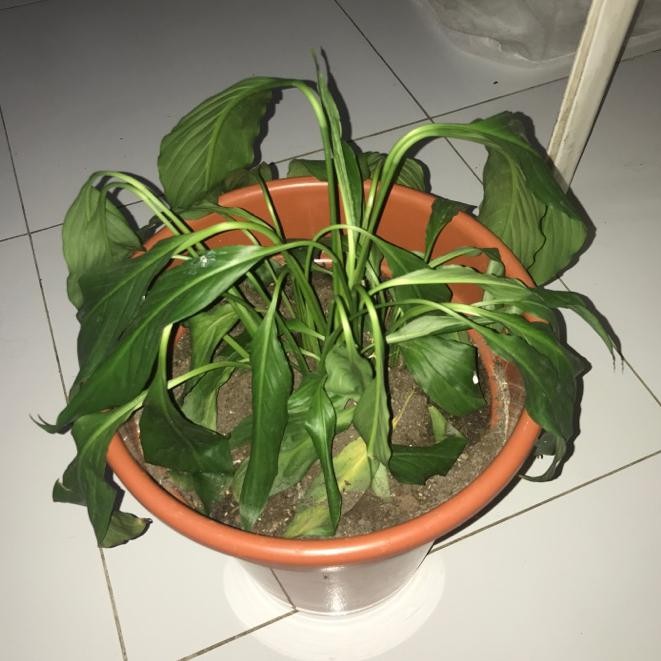







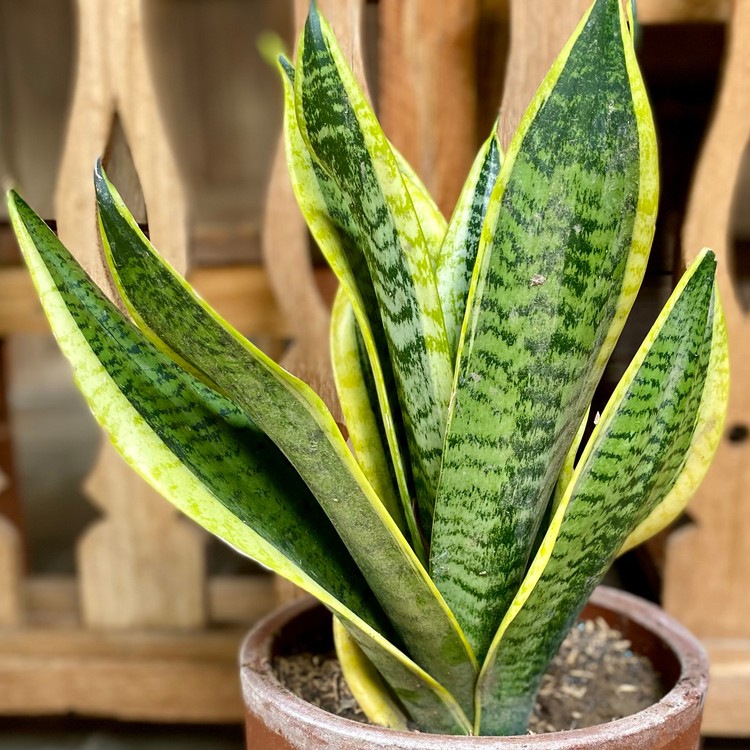

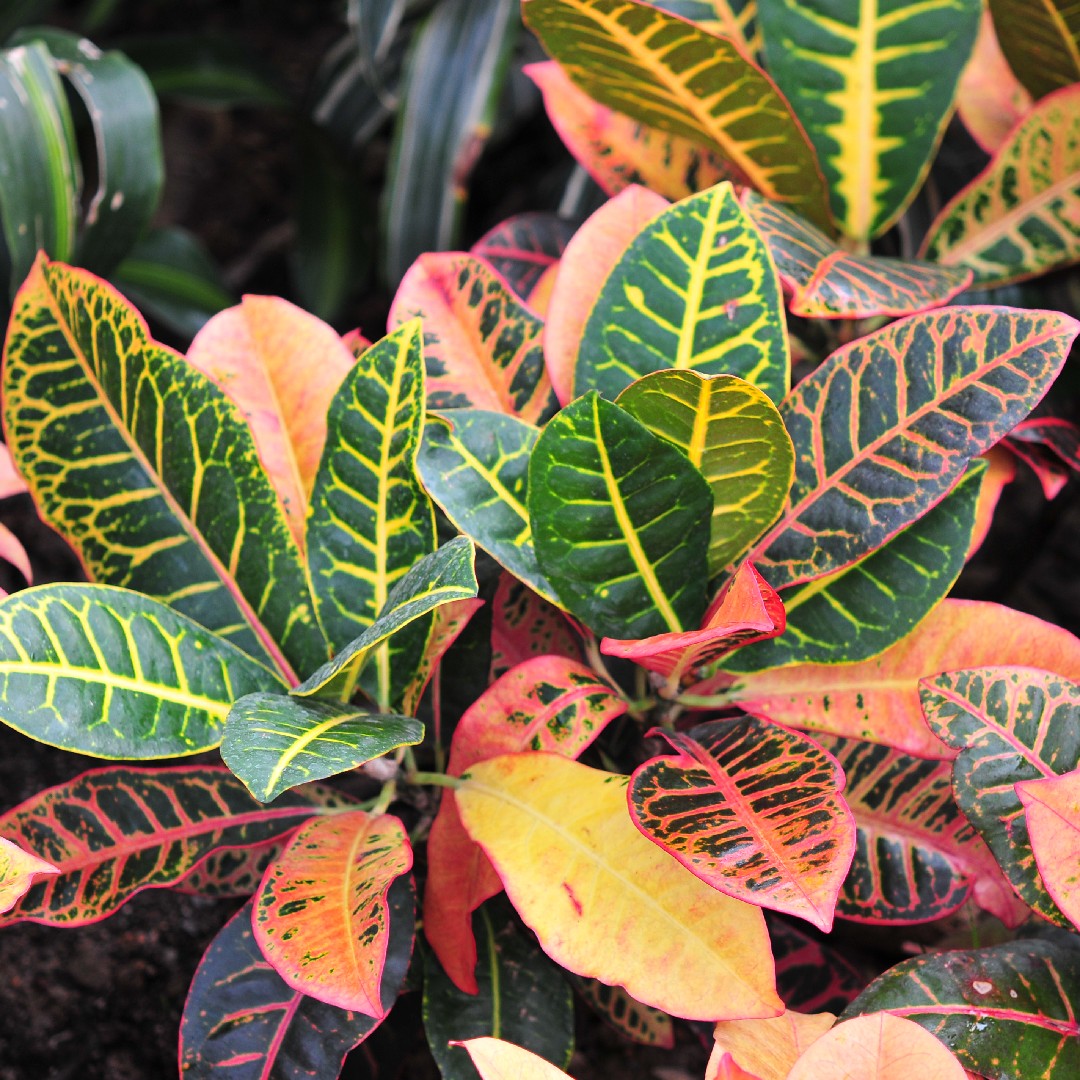
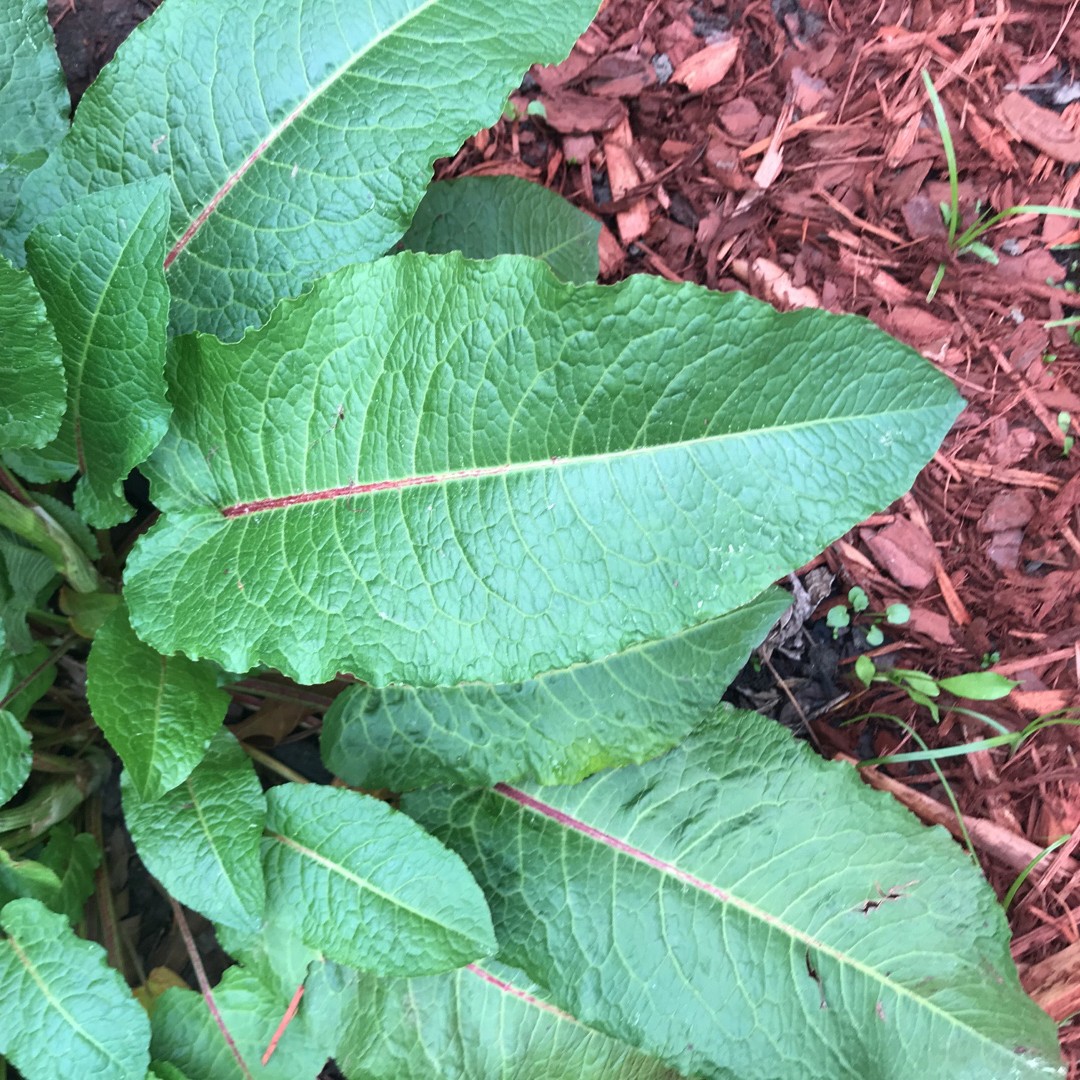








 Just like people, each plant has its own preferences and needs. Devote time to understanding your plants so you can nurture them properly. Observe your plants attentively, learning from their growth patterns, and becoming more in tune with their needs as you grow together. Keep a watchful eye on new plants and seedlings, as they are sensitive to both overwatering and underwatering. Shower them with gentle love and attention, fostering their growth and strength. Let the rhythm of your local climate guide your watering habits, adapting your schedule to the changing weather and the needs of your plants.
Just like people, each plant has its own preferences and needs. Devote time to understanding your plants so you can nurture them properly. Observe your plants attentively, learning from their growth patterns, and becoming more in tune with their needs as you grow together. Keep a watchful eye on new plants and seedlings, as they are sensitive to both overwatering and underwatering. Shower them with gentle love and attention, fostering their growth and strength. Let the rhythm of your local climate guide your watering habits, adapting your schedule to the changing weather and the needs of your plants. 





















